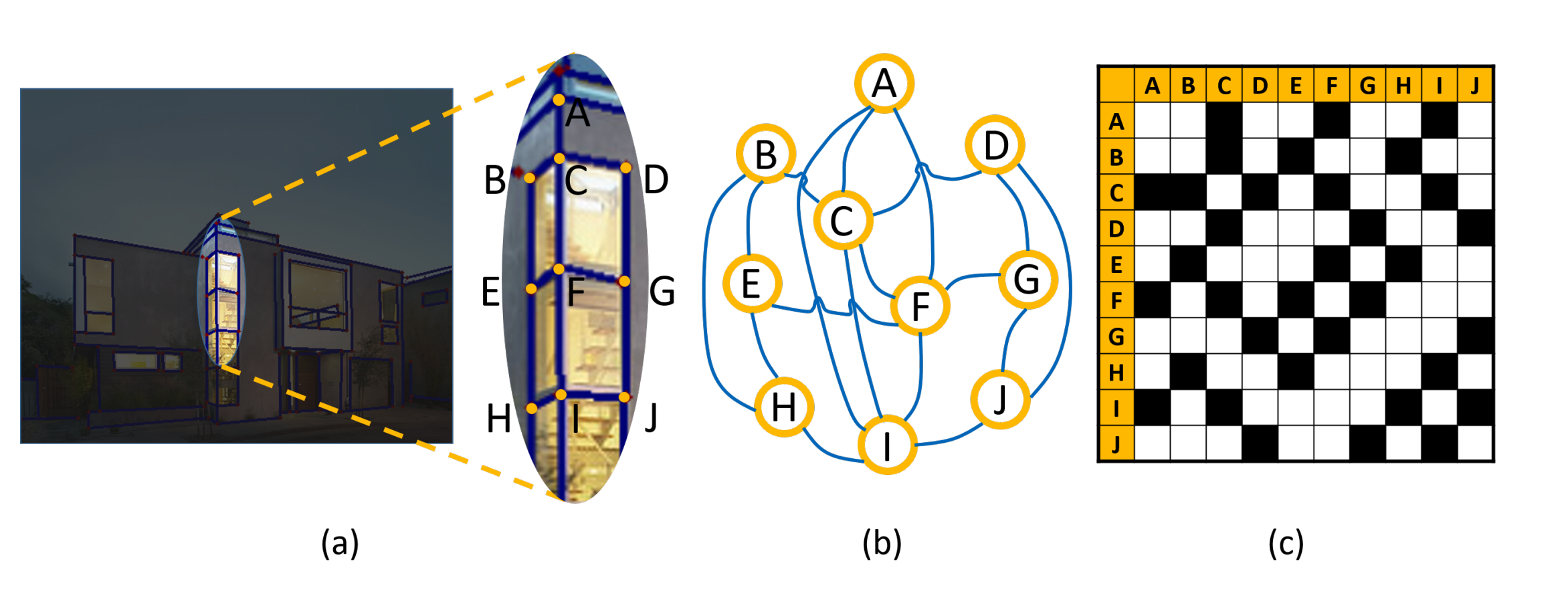https://github.com/svip-lab/PPGNet
Source code for our CVPR 2019 paper - PPGNet: Learning Point-Pair Graph for Line Segment Detection
https://github.com/svip-lab/PPGNet
Last synced: 3 months ago
JSON representation
Source code for our CVPR 2019 paper - PPGNet: Learning Point-Pair Graph for Line Segment Detection
- Host: GitHub
- URL: https://github.com/svip-lab/PPGNet
- Owner: svip-lab
- License: mit
- Created: 2019-04-04T07:40:01.000Z (over 6 years ago)
- Default Branch: master
- Last Pushed: 2019-07-29T04:29:30.000Z (almost 6 years ago)
- Last Synced: 2024-08-03T01:15:14.687Z (12 months ago)
- Language: Python
- Homepage: https://www.aiyoggle.me/publication/ppgnet-cvpr19/
- Size: 94.7 KB
- Stars: 173
- Watchers: 13
- Forks: 37
- Open Issues: 12
-
Metadata Files:
- Readme: README.md
- License: LICENSE
Awesome Lists containing this project
- awesome-image-alignment-and-stitching - **2019CVPR**
README
# PPGNet: Learning Point-Pair Graph for Line Segment Detection
PyTorch implementation of our CVPR 2019 paper:
[**PPGNet: Learning Point-Pair Graph for Line Segment Detection**](https://www.aiyoggle.me/publication/ppgnet-cvpr19/ppgnet-cvpr19.pdf)
Ziheng Zhang*, Zhengxin Li*, Ning Bi, Jia Zheng, Jinlei Wang, Kun Huang, Weixin Luo, Yanyu Xu, Shenghua Gao
(\* Equal Contribution)
The poster can be found [HERE](https://www.aiyoggle.me/publication/ppgnet-cvpr19).

**Demonstraton of juncton-line graph representaton G={V, E}. (a) an sample image patch with 10 junctons (V); (b) the graph which describes the connectvity of all junctons (G); (c) the adjacency matrix of all junctons (E, black means the junction pair is connected).**
## Requirements
- Python >= 3.6
- fire >= 0.1.3
- numba >= 0.40.0
- numpy >= 1.14.5
- pytorch = 0.4.1
- scikit-learn = 0.19.2
- scipy = 1.1.0
- tensorboard >= 1.11.0
- tensorboardX >= 1.4
- torchvision >= 0.2.1
- OpenCV >= 3.4.3
## Usage
1. clone this repository (and make sure you fetch all .pth files right with [git-lfs](https://git-lfs.github.com/)): `git clone https://github.com/svip-lab/PPGNet.git`
2. download the preprocessed *SIST-Wireframe* dataset from [BaiduPan](https://pan.baidu.com/s/1Sbdi1lL492fhmPL1t1Ov0w) (code:lnfp) or [Google Drive](https://drive.google.com/file/d/1KggPcHCRu8BcOqCvVZCXiB64y9L2nQDf/view?usp=sharing).
3. specify the dataset path in the `train.sh` script. (modify the --data-root parameter)
4. run `train.sh`.
Please note that the code requires the GPU memory to be at least 24GB. For GPU with memory smaller than 24GB, you can use a smaller batch with `--batch-size` parameter and/or change the `--block-inference-size` parameter in `train.sh` to be a smaller integer to avoid the out-of-memory error.
## Citation
Please cite our paper for any purpose of usage.
```
@inproceedings{zhang2019ppgnet,
title={PPGNet: Learning Point-Pair Graph for Line Segment Detection},
author={Ziheng Zhang and Zhengxin Li and Ning Bi and Jia Zheng and Jinlei Wang and Kun Huang and Weixin Luo and Yanyu Xu and Shenghua Gao},
booktitle={Proceedings of the IEEE Conference on Computer Vision and Pattern Recognition},
year={2019}
}
```